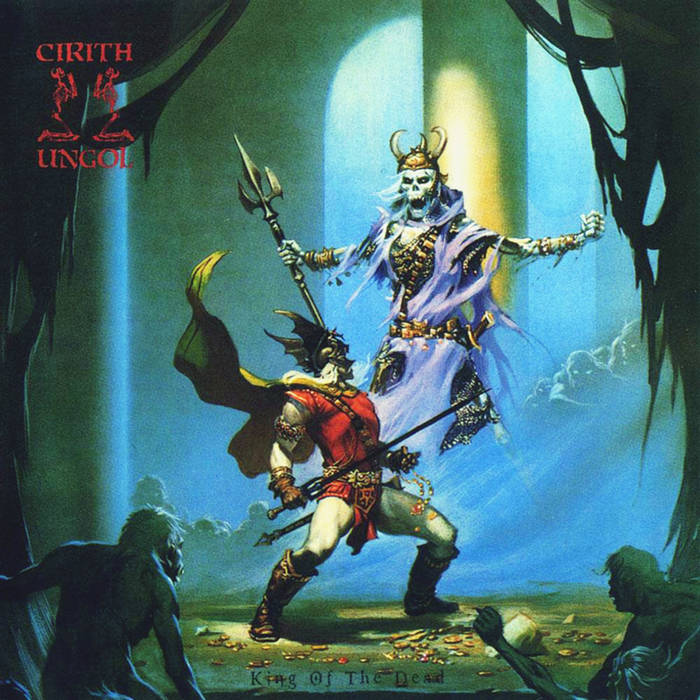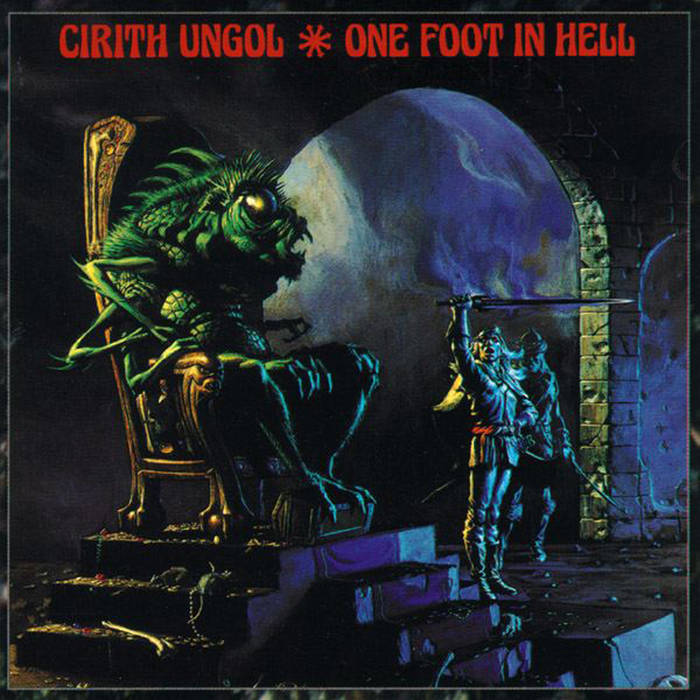Cirith Ungol
King of the Dead (1984)

Cirith Ungol's second album can be best described as a quirkier, doomier elaboration of early- Black Sabbath mixed with tinges of progressive rock from the 1970s. Amazingly this combination serves as a backing soundscape for one of the more unusual vocalists of the heavy metal genre. The vocals, which ring out in high-pitched 'banshee-like' wails, tell stories of futurism transposed within ancient fables of kings and death.
From a purely musical perspective King of the Dead fits in more with what was happening in the early 1970s than the post-NWOBHM era in which it was released. The song-writing has that 'off-kilter' or 'psychedelic' undercurrent, and also some focus on melodic improvisation like progressive rock. The production also shares the 'warm' purist feel from that aforementioned era, with all instruments able to be heard clearly, particularly eschewing the noisier and more heavily distorted guitar tones that were becoming more popular by the mid-80s. Also notable is the tempo, which compared to the need-for-speed that had also started to take the genre by storm at the time, is far less break-neck, allowing the band's unique melodic prowess to take centre-stage. What is from the early-mid 1980s era though is the 'Metal spirit' of which the music is played and the uncanny 'apocalyptic' atmosphere.
The bass is a real highlight and can be heard clearly in the mix, with bassist regularly playing different melodic lines to the guitars, adding both thematic and harmonic depth to the songs. The guitars and the bass, whether supporting the same melody line, or playing poly-phonically, create a sense of texture, depth and colour, allowing the weirdness of the vocals to have enough space to do their thing. The structures although still in the verse-chorus form, often deviate into progressive territory (mainly via extended bridge sections) and come to life with some excellent lead playing and change of tempo. Occasionally the album reaches an epic feel, especially notable for this is the title track, which features an excellent melodic opening section.
One Foot in Hell (1986)

Cirith Ungol later revealed that by this point the band had lost creative control of their music to their record label. Despite this One Foot in Hell is a mainstream verse/chorus heavy metal album in the hands of capable, inventive musicians. Whilst limited in what they were able to achieve song-writing wise, they deliver a passionate showing of well-executed Black Sabbath influenced heavy metal (with more touches of bands like Judas Priest and Iron Maiden than previously). This led the band to a sound much closer to the prevailing NWOBHM-era template of the time.
Compared to King of the Dead there is a distinct reduction in the progressive influence on song-writing – less focus on melodic/harmonic development and far less interplay between the guitars and bass lines etc. The focus is more on writing heavy metal anthems, with catchy rhythms and booming choruses. The shrill, narrow range of the vocal style fits this style particularly well as it adds a lot of energy and is perfectly suited to the themes of apocalypse, war and hellfire. The vocals are perhaps as menacing as any the band produced and are backed by gang-vocals to really add power and emphasis when needed.
The nuances in mood that can be found on King of the Deed (and seamless changes between these) are unfortunately mostly absent, however the band does remain adept at creating tension and releasing it at the most opportune moments.

Comments
Post a Comment